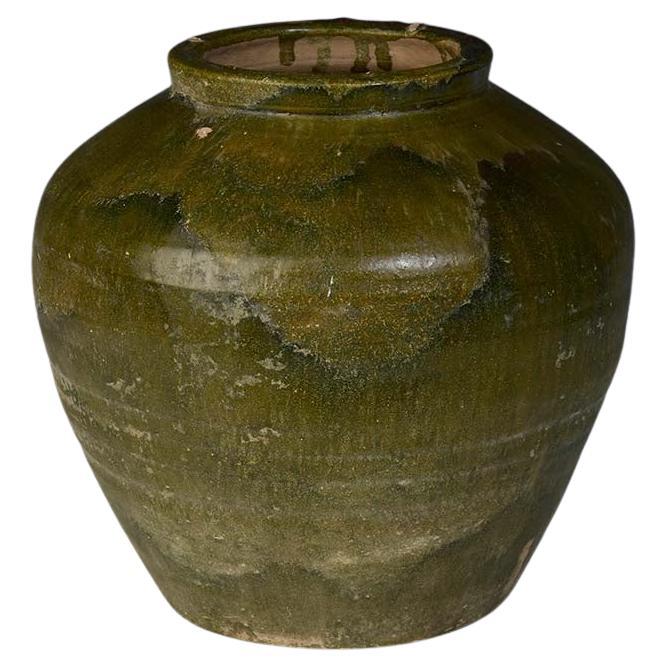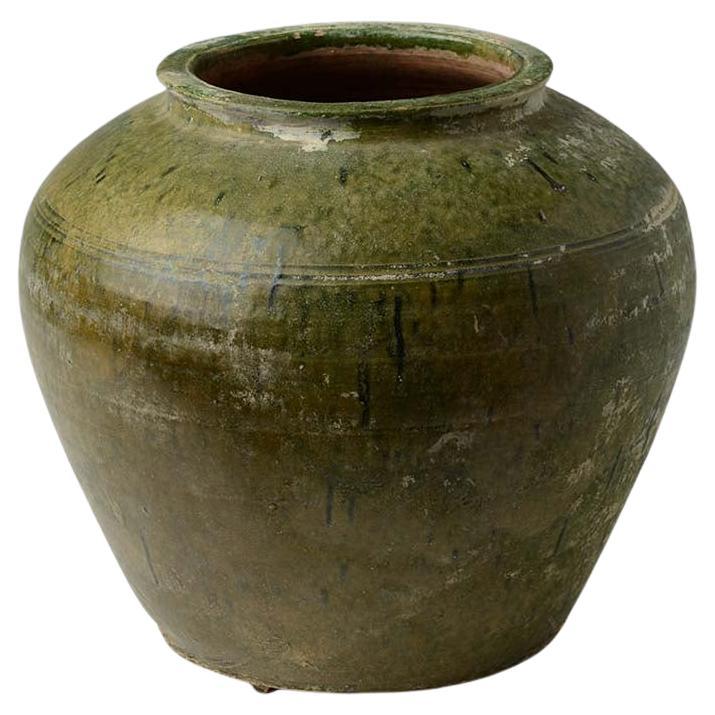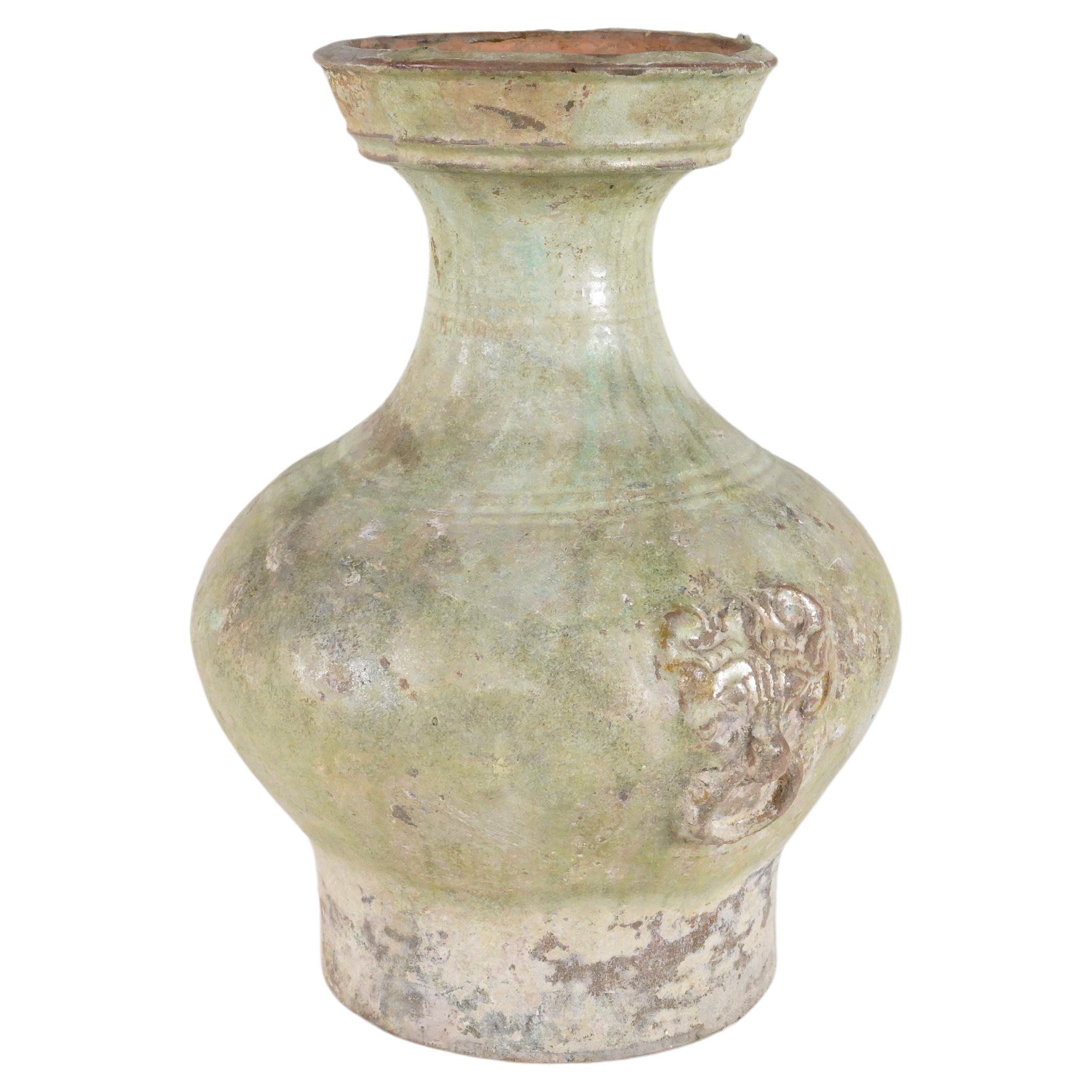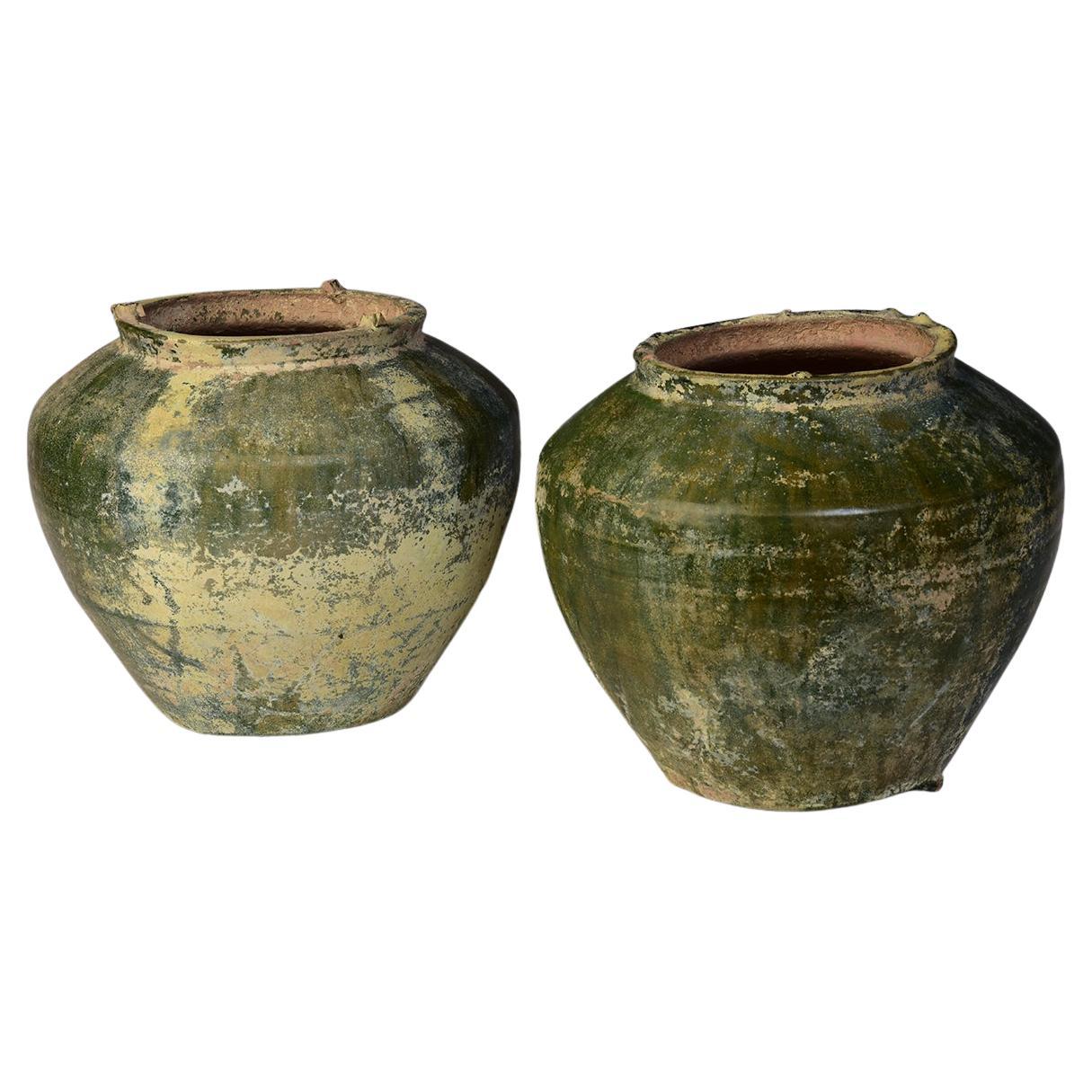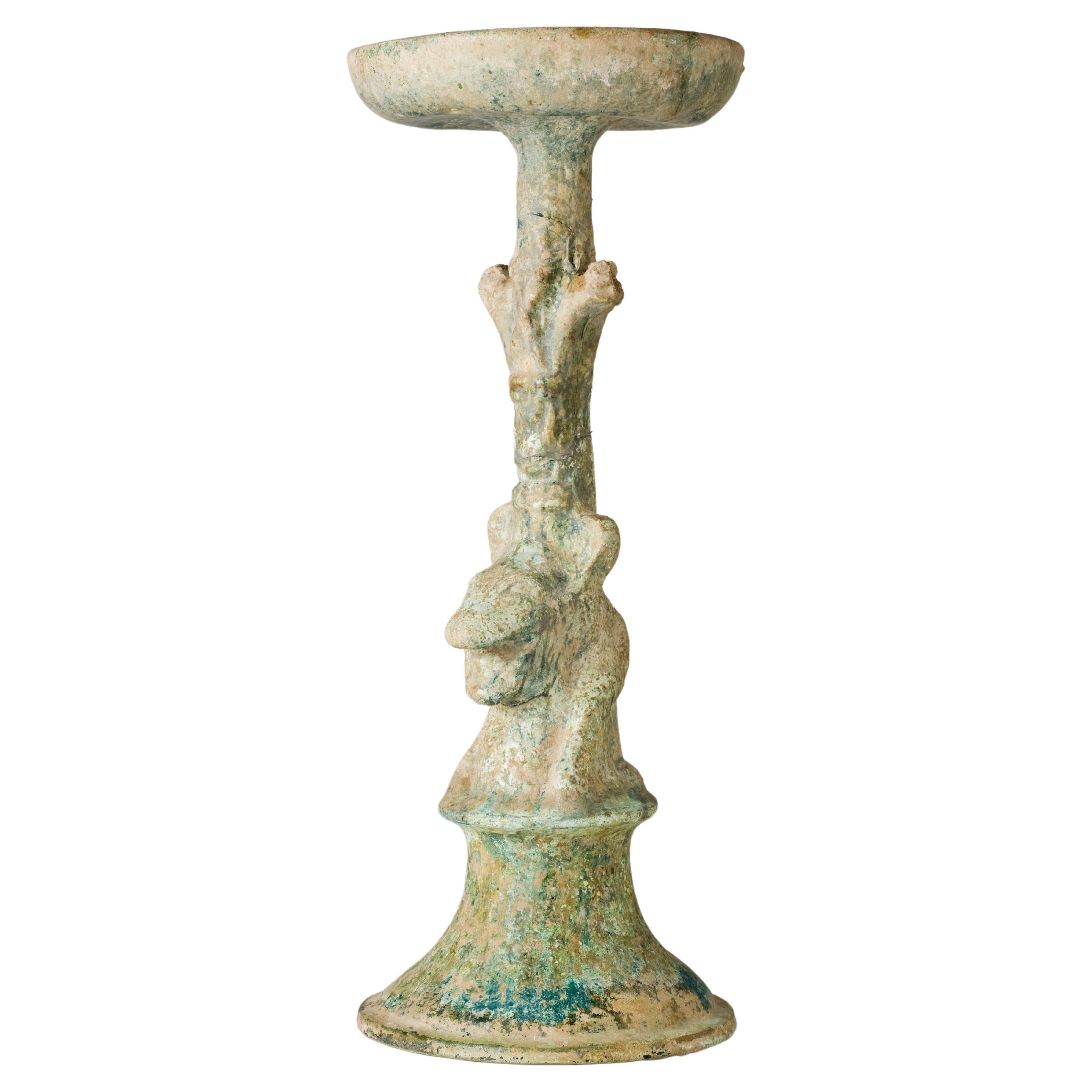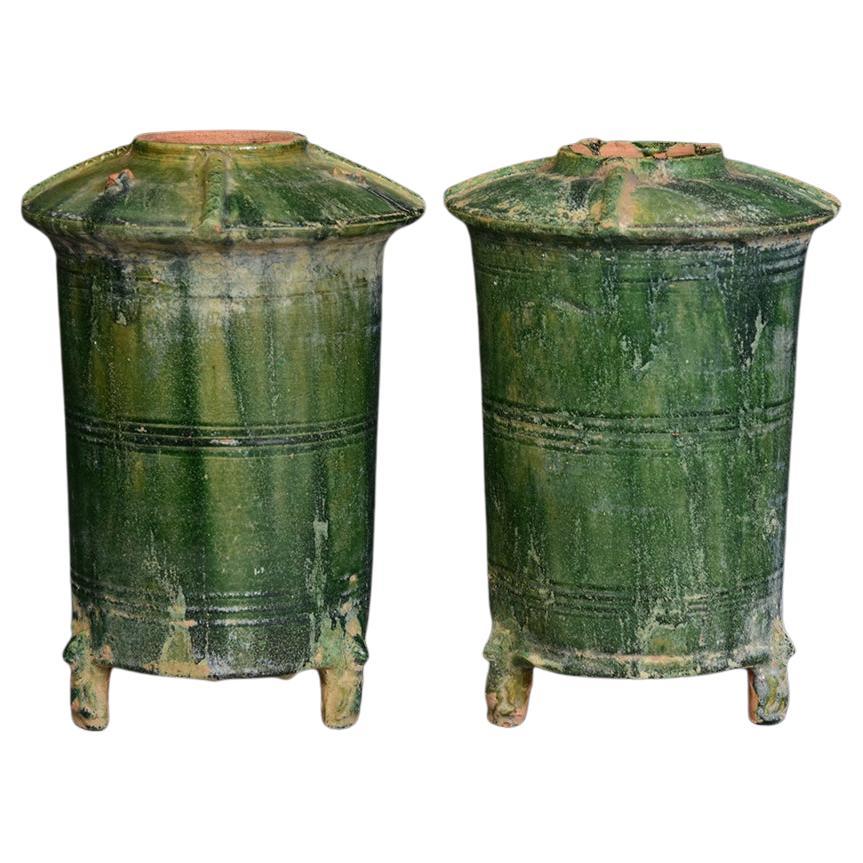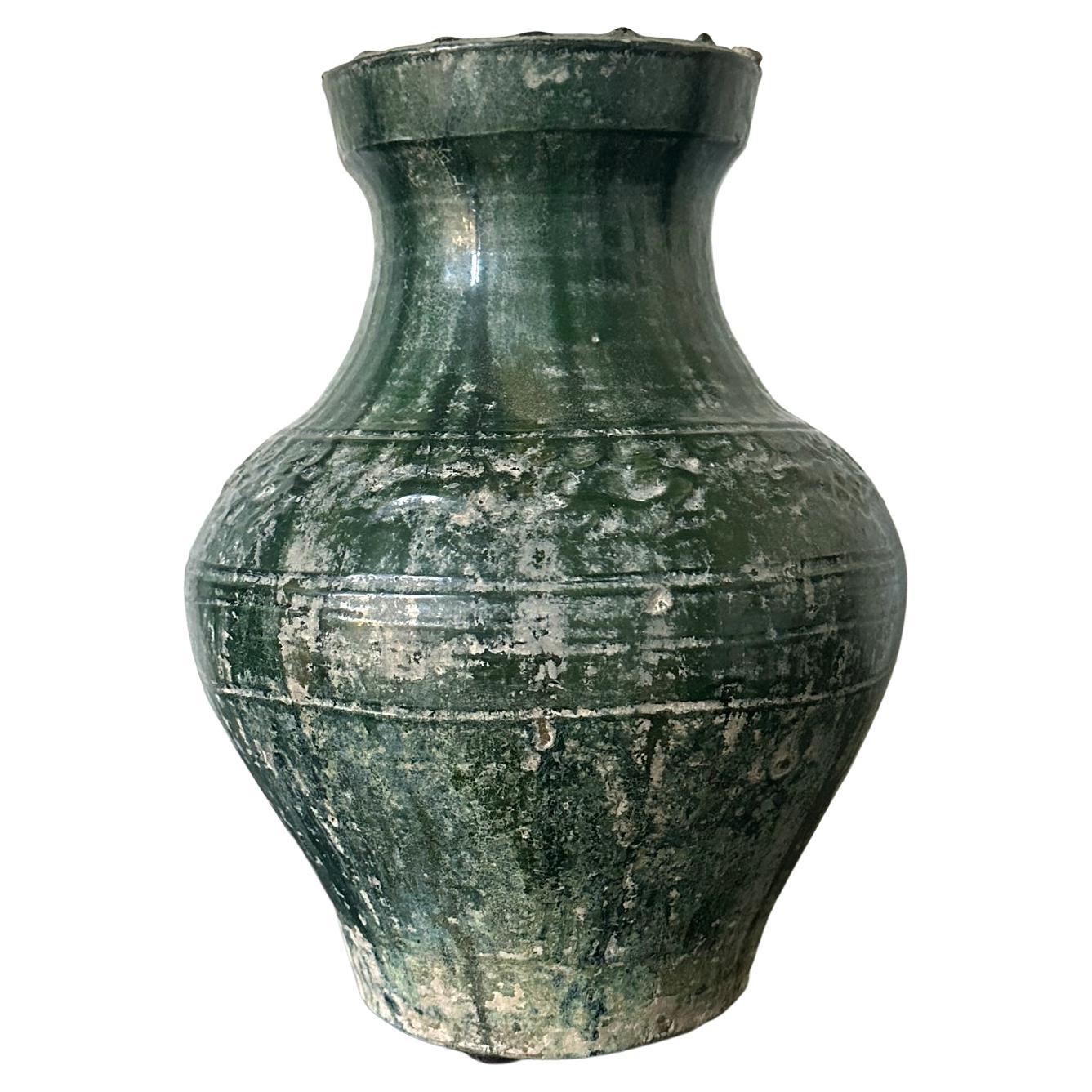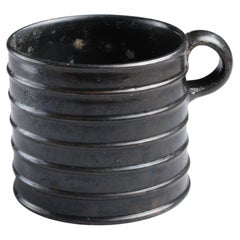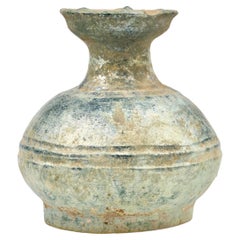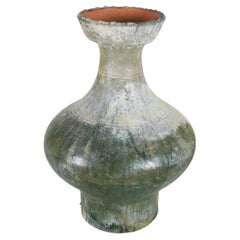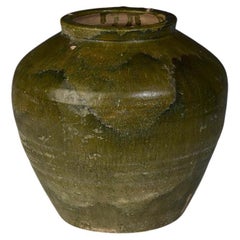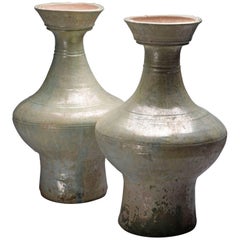
Large Ancient Chinese Han Dynasty Green Glazed Hu Vases, 206 BC
View Similar Items
Want more images or videos?
Request additional images or videos from the seller
1 of 6
Large Ancient Chinese Han Dynasty Green Glazed Hu Vases, 206 BC
About the Item
- Dimensions:Height: 17.25 in (43.82 cm)Width: 10 in (25.4 cm)Depth: 10 in (25.4 cm)
- Sold As:Set of 2
- Materials and Techniques:
- Place of Origin:
- Period:
- Date of Manufacture:206 BC
- Condition:Both vases are intact and with no restorations. With a copy of a thermoluminescence test from Oxford Authentication (C109J64).
- Seller Location:London, GB
- Reference Number:1stDibs: LU1052210481021
About the Seller
5.0
Recognized Seller
These prestigious sellers are industry leaders and represent the highest echelon for item quality and design.
Established in 2008
1stDibs seller since 2014
100 sales on 1stDibs
Typical response time: 7 hours
Associations
LAPADA - The Association of Arts & Antiques DealersInternational Confederation of Art and Antique Dealers' AssociationsThe British Antique Dealers' Association
More From This SellerView All
- Ancient Greek Black Glaze Ribbed MugLocated in London, GBGreek black-glaze ribbed mug Athens, circa 475-425 B.C. terracotta. The mug is of a straight-sided, cylindrical form with seven horizontal ribs and an applied ring handle just below the lip. The base is flat with a slightly raised foot running around the circumference. The very centre of the underside is reserved and with traces of ochre pigment. Intact, some slight chipping to the glaze touched in, areas of incrustation to the base and interior. This strikingly modern piece is a fine example of Attic black...Category
Antique 15th Century and Earlier Greek Classical Greek Ceramics
MaterialsTerracotta
- Ancient Greek Black Glaze Kantharos Wine CupLocated in London, GBGreek Black Glaze Kantharos Circa Early 4th Century B.C. Terracotta With old label reading ‘No. 133’ Height: 8.8 cm This 4th Century B.C. kan...Category
Antique 15th Century and Earlier Classical Greek Vases
MaterialsCeramic
- Ancient Minoan Lotus Flower VaseLocated in London, GBMinoan Lotus vase Circa 1700-1450 B.C. Serpentine stone 8.9 cm x 14 cm ‘’The fruitful isle of Crete, well known to fame, Sacred of old to Jove's imperial name, In the mid-oce...Category
Antique 15th Century and Earlier Greek Other Decorative Bowls
MaterialsSerpentine
- Ancient Greek Perfume BottleLocated in London, GBAthenian Black-glaze perfume pot with inscription Athens, c. 425-400 B.C. Terracotta Measures: Height: 9cm; diameter across lip: 7.5cm; width including handle: 9cm This 5th Cen...Category
Antique 15th Century and Earlier Italian Classical Greek Bottles
MaterialsPottery
- Ancient Greek Corinthian HelmetLocated in London, GBCorinthian helmet with Bull Horns and Lotus Flower Decoration. Archaic Period, c.550-500 BC. Cast, hammered and incised bronze. An exceptionally well preserved example of one of the most iconic ancient Greek...Category
Antique 15th Century and Earlier European Classical Greek Mounted Objects
MaterialsBronze
- Ancient South Arabian Alabaster InscriptionLocated in London, GBSouth Arabian Alabaster Inscription Calcite Alabaster circa 1st century A.D. ‘’Consequently, neither white marble of Paros nor any other stone which men admire can be compared with the precious stones of Arabia, since their whiteness is most brilliant, their weight the heaviest, and their smoothness leaves no room for other stones to surpass them.’’ - Diodorus Siculus, Library of History, Book II, 52.9 This inscription, finely worked on an alabaster tablet, is a remarkably well preserved example of Ancient South Arabian script, with its distinct bold, angular forms, written in the Qatabanic dialect - that is, the dialect spoken by the people of the kingdom of Qataban, which ruled much of modern day Yemen from the 7th Century B.C. to the 2nd Century A.D. The text, which reads: ‘[... ...]sa?d and Ma?add?i- / (of the lineage) of Hawfa- / She entrusted Anb- / against any malfeasance (which would remove it) from its place’ - indicates that it likely served to commemorate a temple offering. The quality of the script, incised so neatly into the surface of the alabaster, tells us that this piece was commissioned by somebody of considerable wealth and prestige, employing a scribe of equally considerable expertise. South Arabia was known throughout the ancient world for its incredible wealth - so much so that the Romans termed the region ‘Arabia Felix’ - literally, ‘Happy, or Fortunate, Arabia.’ That wealth was built largely on the trade of spices and incense, in which the Kingdom of Qataban played a major part. According to Pliny the Elder, this was the sole country through which frankincense could be exported, first being collected in the city of Shabwa, on the South Arabian coast, and from there travelling by camel up to Gaza, to be shipped all across the Mediterranean - not only that, but all growers of myrrh across Arabia were required to give a quarter of their yield to the king of the Qatabanians. As such, the kingdom became exceedingly rich and powerful, and Pliny goes on to tell us that ‘The nations of the Larendani and the Catabani, and the Gebanitæ [...] occupy a great number of towns, the largest of which are Nagia, and Thomna (the capital of Qataban) with sixty-five temples, a number which fully bespeaks its size.’ Because of the nature of its exports, frankincense in particular - the ‘sweat of of the gods’ according to the Egyptian Book of the Dead, and perhaps most famous as one of the three gifts brought to the newborn Christ - being closely associated with the divine, South Arabia’s reputation in antiquity was as a mysterious, almost sacred, and - crucially - extraordinarily wealthy region, at the very edge of the known world; in the words of Herodotus: ‘’Enough of marvels, and yet the land of Arabia gives off a scent as sweet as if divine.’’ This inscription invokes the protection of god Anbay, the judge-oracle of the chief god ‘Amm, who he served as an attendant. Much of what we know of the religious life of the ancient South Arabians comes to us from early Islamic texts, describing what is known in Islamic scholarship as ‘Jahiliyyah’ - the age before the advent of Islam in Arabia. What comes across in much of these texts is that these religious practices placed a great deal of emphasis on sacred stones, perhaps linked to the brilliance of the alabaster which is local to the region, and which a great many of the cult-objects produced in this time are made from. Hisham ibn-Al-Kalbi’s Book of Idols records: ‘’The Arabs were passionately fond of worshipping idols [...] Whenever a traveller stopped at a place or station in order to rest or spend the night, he would select for himself four stones, pick out the finest among them and adopt it as his god, and use the remaining three as supports for his cooking-pot.’’ This inscription was once in the collection of the intrepid British-Australian travel...Category
Antique 15th Century and Earlier Yemeni Abstract Sculptures
MaterialsAlabaster
You May Also Like
- Hu Shape Green-Glazed Vase, Han Dynasty(206 BC - 220 AD)Located in seoul, KRA 'Hu' is a type of large jar or pot that was commonly used in China for storage purposes, including holding liquids or dry goods like grains. This particular shape of pottery usually features a wide body and a narrow opening, and sometimes comes with a lid. The 'Hu' could also be more elongated with a slender neck, designed for easy pouring of liquids. The rainbow-like colors on this green-glazed surface come from changes that happen over hundreds of years while it's buried. This process is also known as "iridescence" and is often observed in ancient Chinese green pottery...Category
Antique 15th Century and Earlier Chinese Han Antiquities
MaterialsEarthenware
- A Large Han Dynasty (206BC-220AD) Glazed Hu VesselLocated in Chicago, ILThis is a fine example of a Han hu wine storage vessel, buried for the afterlife. The compressed globular body narrows sharply to a slender waisted neck, covered with a dark green le...Category
Antique 15th Century and Earlier Chinese Han Antiquities
MaterialsTerracotta
- Han Dynasty, Antique Chinese Green Glazed Pottery JarLocated in Sampantawong, THChinese green glazed pottery jar. Lead glaze with copper is the main colorant used in Han period to produce green glaze. Greenware became popular during the Eastern Han...Category
Antique 15th Century and Earlier Chinese Antiquities
MaterialsPottery
$1,760 Sale Price20% Off - Han Dynasty, Antique Chinese Green Glazed Pottery JarLocated in Sampantawong, THChinese green glazed pottery jar in globular form with plain decoration. Lead glaze with copper is the main colorant used in Han period ...Category
Antique 15th Century and Earlier Chinese Antiquities
MaterialsPottery
$1,760 Sale Price20% Off - A Han (206BC -220AD) Glazed Hu VesselLocated in Chicago, ILThis is a fine, heavily patinated example of a Han hu wine storage vessel, buried for the afterlife. The compressed globular body narrows to a slender waisted neck, covered with a da...Category
Antique 15th Century and Earlier Chinese Han Antiquities
MaterialsTerracotta
- Han Dynasty, a Pair of Antique Chinese Green Glazed Pottery JarsLocated in Sampantawong, THA pair of Chinese green glazed pottery jars. Lead glaze with copper is the main colorant used in Han period to produce green glaze. Greenware became popular during the Eastern Han...Category
Antique 15th Century and Earlier Chinese Antiquities
MaterialsPottery
$2,280 Sale Price / set20% Off
Recently Viewed
View AllMore Ways To Browse
Bronze Hu Vase
Han Dynasty Glazed Vase
Han Dynasty Green
Bronze Hu
Chinese Bronze Hu
Chinese Period Furniture
Japanese Furniture 18th Century
Japanese Furniture 17th Century
Arita Jar
Japanese Furniture 1700
Japanese Export Blue And White
Japanese Furniture From 1700
Japanese Furniture Made In Europe 1700
Gunnar Nylund Seal
Audio Diffusers
Ru Ware
Jiki Shippo
Antique Porcelain Handpainted Lamps


